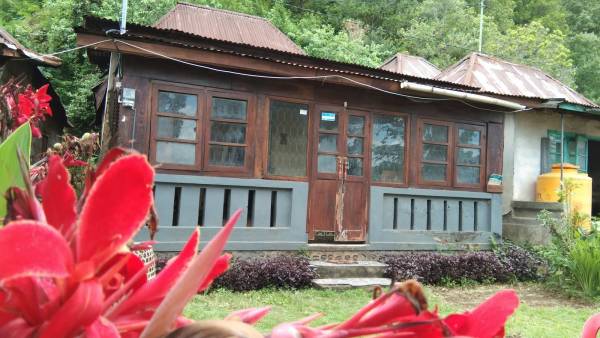Bale Gajah Tumpang Salu, An Authentic Traditional House In North Bali.

Buleleng, Entering Sidetapa Village, Banjar District, Buleleng Regency there is a cool forest atmosphere offering by a natural atmosphere that seems wild but gives a sense of calm and peace. Entering the residential area, confronted by friendly and unpretentious residents and easy to be invited to communicate. From several visits to Sidetapa Village, in the settlement, there are still traditional Balinese. Traditional Bali Aga the house is called Bale Gajah Tumpang Salu, which are scattered in several places around the settlement. This traditional house is made of clay and backs to the road unlike ordinary houses facing the road. In the traditional house, there are 3 room dividers. The first room divider called Nista Ning Mandala was used by the community as receiving guests, the second room was called Madya Ning Mandala, a place for people to cook, prepare ceremonies and store religious ceremonial tools. While the Main Ning Mandala is a place of worship. Overall has meaning, like this house which has 3 rooms that store knowledge. This ancient house was built hundreds of years ago and has remained strong until now, to enter the "era now". The building is very unique. earth walls, tin roofs and in the future will be developed into a Sidetapa museum.
This house is the centre of the visit of foreign tourists is not surprising, because this building is very unique, but visiting this ancient house is not haphazardly able to enter, because of its sacred presence. So that photo capturing is only allowed in two rooms (Madya and Nala mandala) while in the main room the mandala is very sacred. Sidetapa village is located at an altitude of 450 meters above sea level, with moderate weather and if driving from Lovina for about 20 minutes. Look at Sidetapa's Pas
Sidetapa village was formerly called Gunung Sari village, because of something and other things, there was a change in name to Sidetapa, which means Sida = Able and Tapa = Meditation. (Able to do meditation). In line with the passage of time, the name Sidatapa is embodied in the statue of an old man meditating in a cave that is able to achieve his goal, and this is the village icon, the ascetic statue. In the development of village tourism later this statue will be made into a souvenir inspired by a Buddhist statue that until now can support many people because the duplicate is sold on the object of the tourist object.
